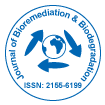当社グループは 3,000 以上の世界的なカンファレンスシリーズ 米国、ヨーロッパ、世界中で毎年イベントが開催されます。 1,000 のより科学的な学会からの支援を受けたアジア および 700 以上の オープン アクセスを発行ジャーナルには 50,000 人以上の著名人が掲載されており、科学者が編集委員として名高い
。オープンアクセスジャーナルはより多くの読者と引用を獲得
700 ジャーナル と 15,000,000 人の読者 各ジャーナルは 25,000 人以上の読者を獲得
インデックス付き
- CAS ソース インデックス (CASSI)
- 索引コペルニクス
- Google スカラー
- シェルパ・ロミオ
- Jゲートを開く
- Genamics JournalSeek
- アカデミックキー
- ジャーナル目次
- 研究聖書
- 中国国家知識基盤 (CNKI)
- ウルリッヒの定期刊行物ディレクトリ
- Global Online Research in Agriculture (AGORA) へのアクセス
- レフシーク
- ハムダード大学
- エブスコ アリゾナ州
- OCLC-WorldCat
- SWBオンラインカタログ
- パブロン
- ジュネーブ医学教育研究財団
- ミアル
- ICMJE
役立つリンク
オープンアクセスジャーナル
このページをシェアする
抽象的な
Ameliorative Effect of Ziziphus Jujuba on Sodium Arsenite Induced Toxicity in Charles Foster Rats
Arun Kumar*, Rudra Pratap, Singh Chauhan and Shreya Parmar
In the recent times, arsenic poisoning in the ground water in the plains of the Gangetic basin has increased many folds. It is estimated that more than 300 million populations in the Ganga Meghna Brahmaputra (GMB) plains are affected due to arsenic poisoning. This has caused severe health hazards in the exposed population. In Bihar, about 18 districts out of 38 are severely affected with arsenic poisoning in ground water. The exposed population are exhibiting the typical symptoms of arsenicosis denotes the magnitude of the exposure. Hence, the present study is focused to combat the deleterious effect of arsenic toxicity in animal models utilizing medicinal plant extract. The animals (Charles Foster rats) were treated with Sodium arsenite at the dose of 8 mg per kg body weight for 16 weeks to make arsenic model and upon these arsenic pre-treated rats seed extract of Ziziphus jujuba at the dose of 250 mg per kg body weight was administered for 4 weeks to study the ameliorative effects of this plant extract. After the entire treatment, rats were sacrificed and their blood samples were obtained and analysed for haematological and biochemical study while their tissues like liver and kidney were fixed in the respective fixative for the histopathological study as well as for arsenic contamination. The study shows that arsenic induced toxicity caused deleterious effect on the rats at the haematological, biochemical and histopathological levels and there was significant normalisation in the animal at all the respective levels. Moreover, there was significant elimination from liver and kidney tissues by Z.jujuba. Hence, it possesses ameliorative properties against arsenic induced toxicity and can be used for human purpose after dose titration.

 English
English  Spanish
Spanish  Chinese
Chinese  Russian
Russian  German
German  French
French  Portuguese
Portuguese  Hindi
Hindi